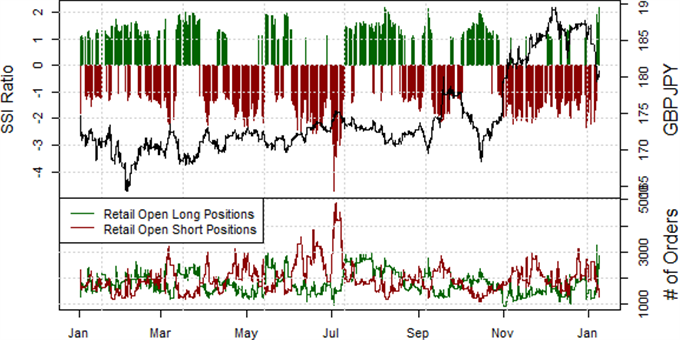
Receive the Weekly Speculative Sentiment Index report via PDF via David’s e-mail distribution list.
GBPJPY – Retail FX traders turned heavily long the British Pound versus the Japanese Yen, and a contrarian view of crowd sentiment points to further GBPJPY weakness.
Trade Implications – GBPJPY:According to our data sample, traders turned net-short ¥174 and with brief exceptions remained short up until last week. Yet the same trader data shows long positions outnumber those short by 2.2:1—matching extremes seen through September, 2014. Heavily one-sided positions often coincide with important turning points in price action, but those extremes are only clear in hindsight. We will continue to favor selling GBPJPY until crowd sentiment flips in the opposite direction.
See next currency section: EURUSD - Euro Forecast to Fall even Further versus US Dollar
--- Written by David Rodriguez, Quantitative Strategist for DailyFX.com
Automate our SSI-based trading strategies via Mirror Trader free of charge
To receive the Speculative Sentiment Index and other reports from this author via e-mail, sign up for his distribution list via this link.
Contact David via
Twitter at http://www.twitter.com/DRodriguezFX
Facebook at http://www.Facebook.com/DRodriguezFX






